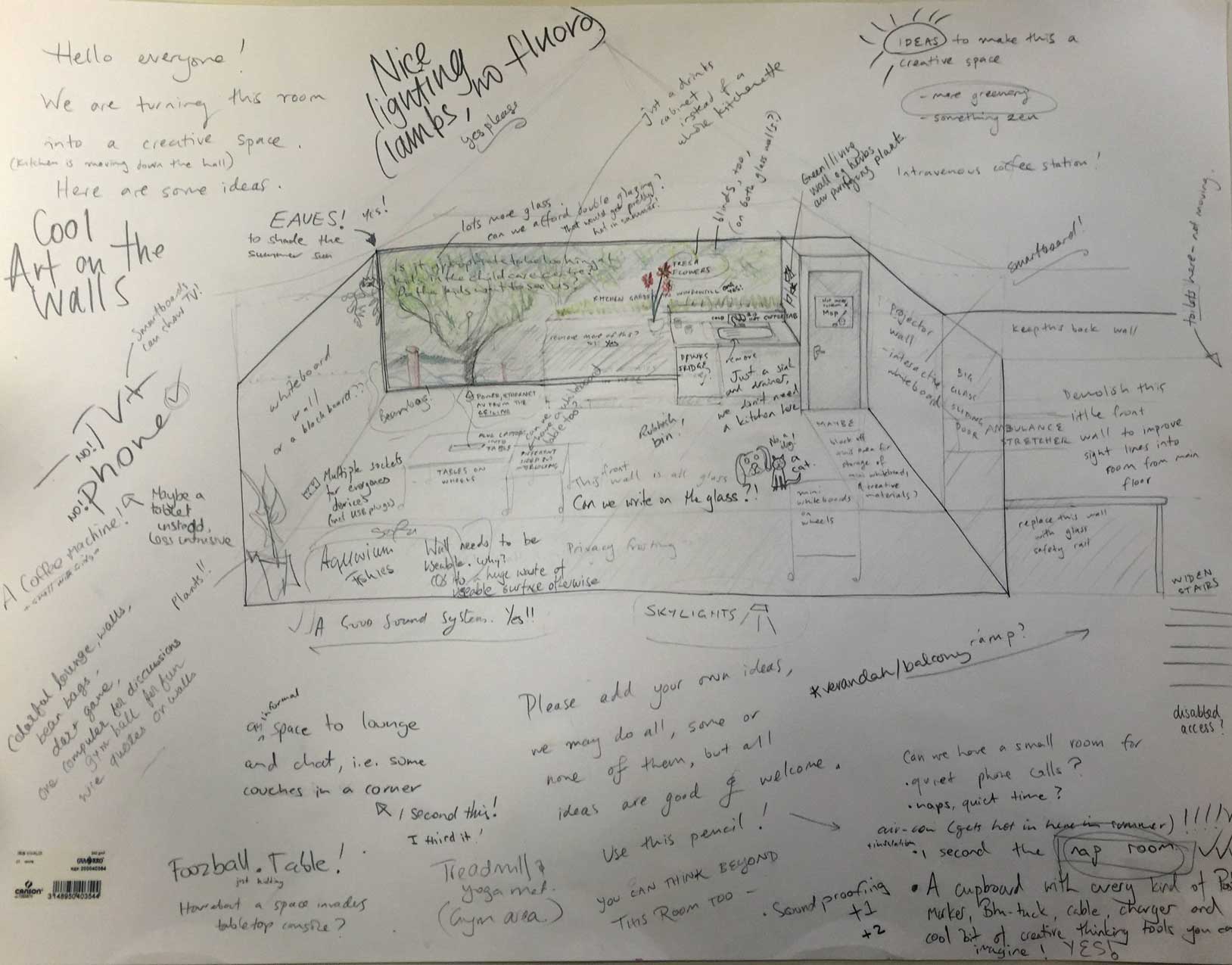Space, Place and 場
Let’s start with 場. In architectural theory we say that a place is a space with a history. But what about the present? What do we call a place where history is being created? A rich place full of interaction and possibility, a place for emerging relationships?

Let’s start with 場.
In Japanese, 場 is pronounced “Ba”. I've spent some time in Japan so when I see that symbol, that's the sound it makes in my head. The character holds the same meaning in Chinese; in Mandarin it is pronounced “Chang” using the third tone. Dictionaries say it means “place” or “field”. However this is a very sparse translation.
In English we have various words like Place, with different meanings. The trinity are Location (and geolocation and coordinates and lat/long and locstat), Space and Place.
In architectural theory we might say that a place is a space with a history. But what about the present? What do we call a place where history is being created? A rich place full of interaction and possibility, a place for emerging relationships?
場 is useful because it holds a little more meaning than “place”. It connotes a dynamic, inhabited place; a place for doing something. Somewhere to hold a festival, or work on a project together. A collaborative place. Ba.
This “Ba-principle” is beautifully enunciated in a paper by Hiroshi Shimizu entitled “Ba-Principle: New Logic for the Real-time Emergence of Information,” [Holonics, 5/1 (1995):67-69]. Shigeki Amitani, a colleague at the Creativity and Cognition Studios, introduced me to the concept and to Shimizu’s paper. The article is not available online as far as I can tell, even in the academic databases. Shigeki assecuted a copy through inter-library loan, which I treasure. However there is a good website on ba.
I'm interested in 場 as a lever to help us understand the power of collaborative environments across our real and virtual worlds. There are plenty of good tools for synchronous and asynchronous communication between members of distributed teams. For asynchronous communication we have email, blogs, letters, grafitti and so on. For synchronous communication – phone, videoconferencing, instant messaging etc. This last (IM) is interesting because it also supports pervasive presence; you can see when your associates are online, and perhaps also something about their state. This affords opportunities for ad-hoc meetings, a key to creative collaboration. But chat is not collaboration – you can meet and talk, but you can’t do anything.
At the same time there is a flowering of asynchronous tools for distributed collaboration (the next step beyond communication). Google has bought a swathe of them over the years. So, what about synchronous collaboration? Of course we still have Second Life; I would say that this is a 場. So is World of Warcraft and any other MMPOG – and especially the constructive ones like Minecraft and Roblox. It is clear that millions of us are happy to switch on an immersive virtual world from time to time, and collaborate with others who are also telepresent in a shared space. There are also plenty of research papers showing that CVEs (Collaborative Virtual Environments) are effective as spaces for collaboration outside of games. Still, they’re not widely adopted for this purpose.
I have an abiding interest in these questions and how to address them. I was first trained as a designer so my early ideas focused on user experience and task flow. Usability and accessibility are important; it doesn’t matter how pretty your virtual world is if your users can’t get their tasks done in it. As I've started to lead and assemble creative teams I've become more interested in socio-technical approaches, particularly affordances and framing.
However we approach it, finding ways to create the sense of a living, dynamic place full of possibility is the heart of the problem of group creativity. Hence, 場.
